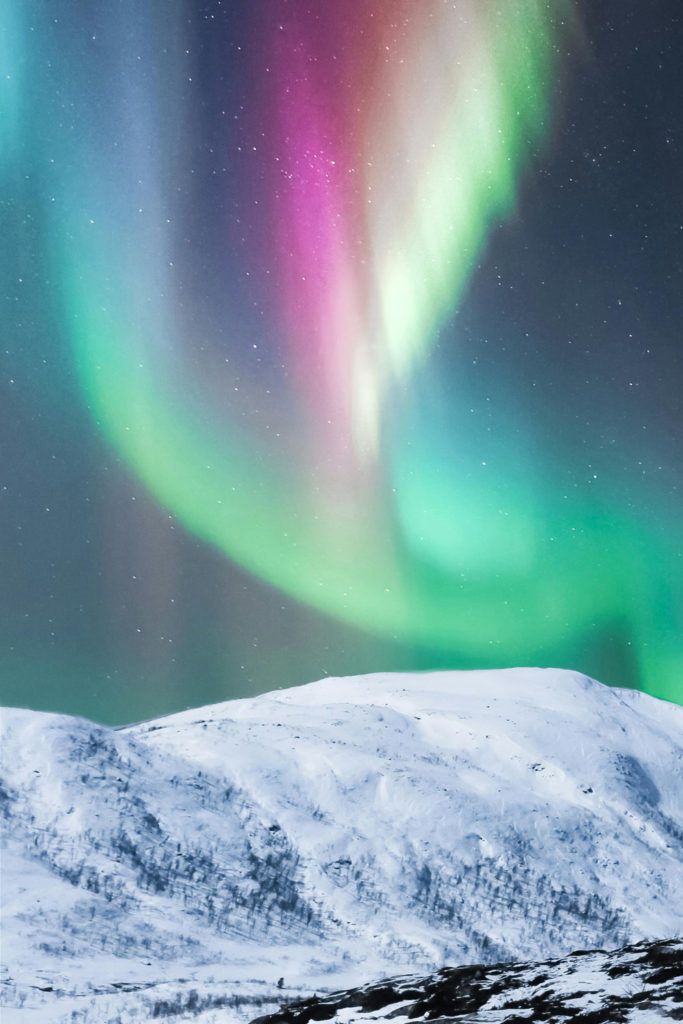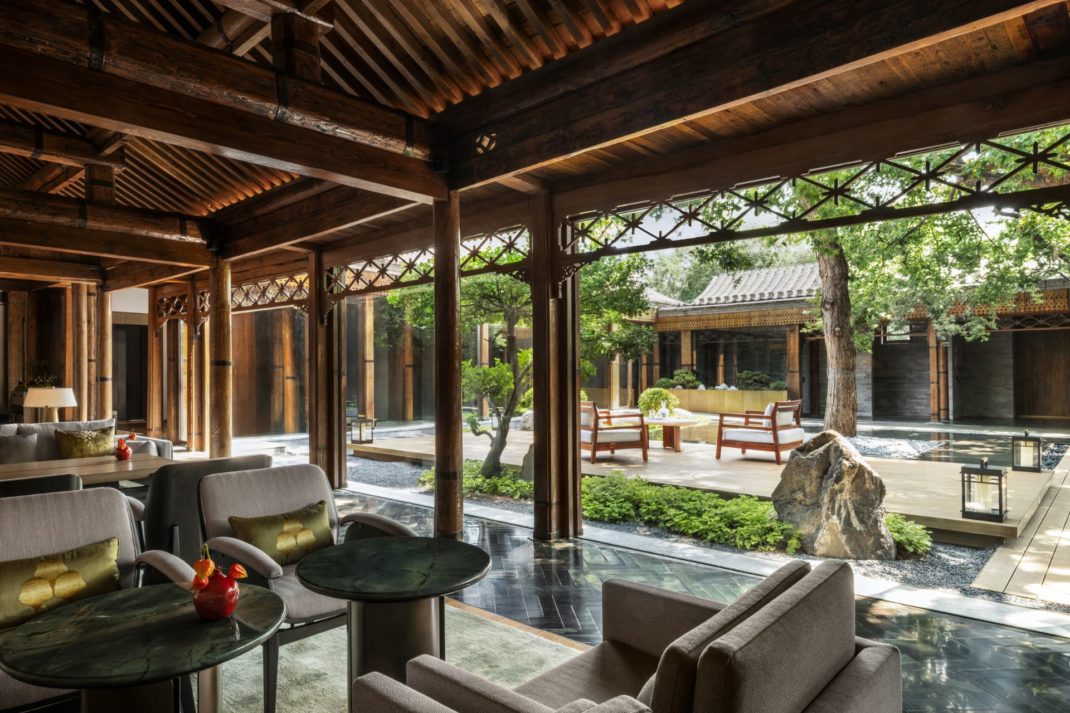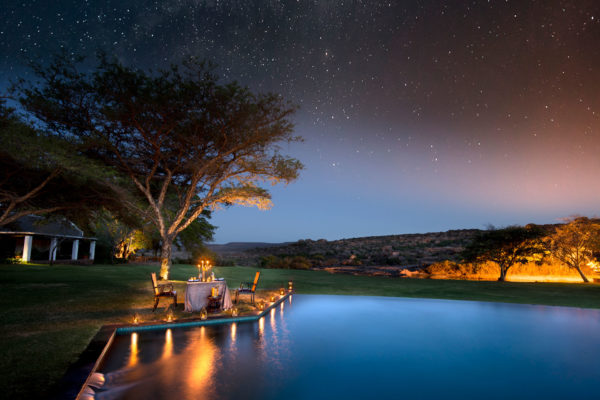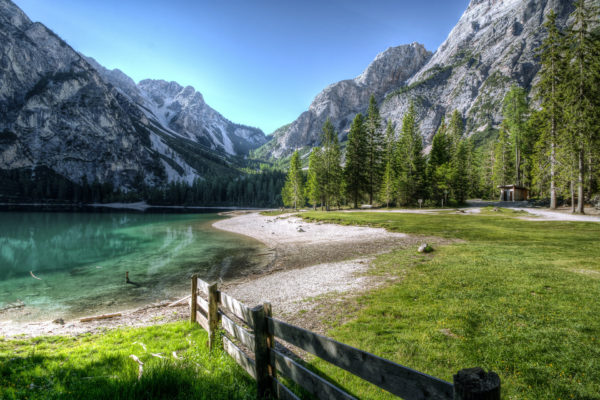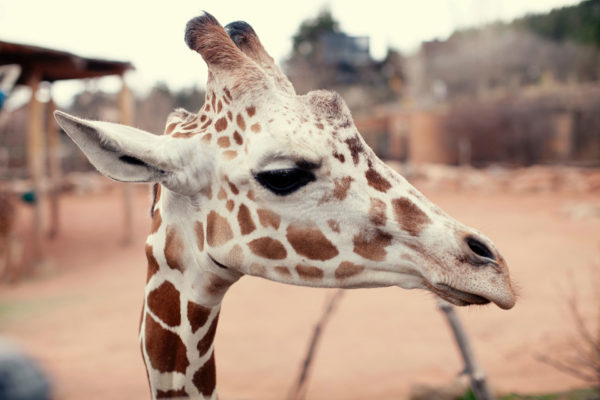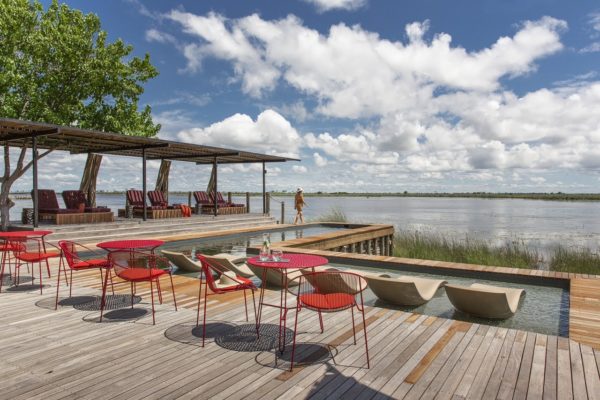The Ultimate Guide To South Africa’s Winelands
By
2 years ago
Caroline Phillips explores South Africa's spectacular wine craftsmanship...
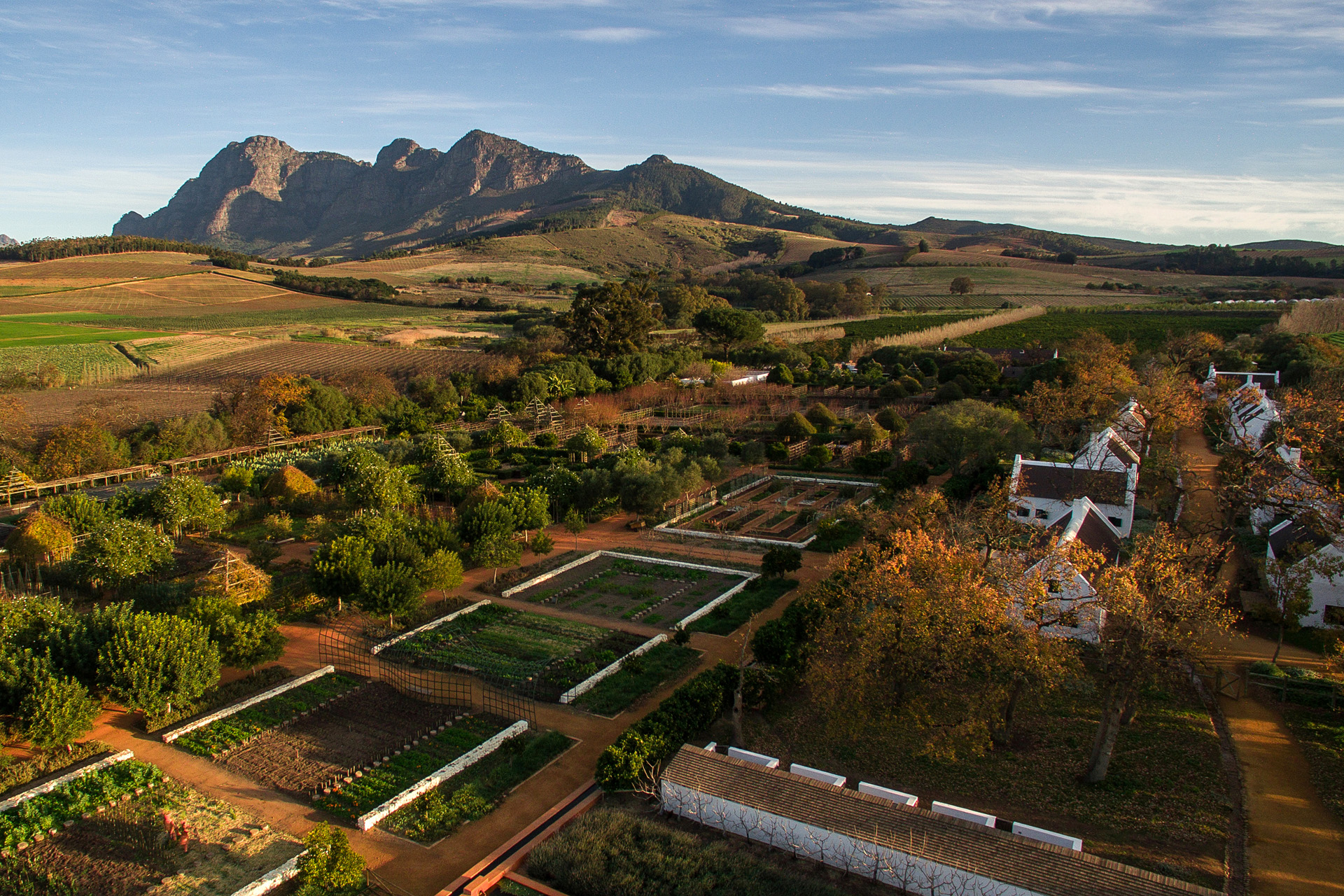
Picture this: mountains and verdant hills with clouds rolling over them. Picturesque valleys dotted with vineyards and over 200 fine-wine estates producing some globally-renowned bottles. Stellar eateries serving fancy French to Afrikaans fusion, plus farm-or-forage-to-fork cuisine. Artisan boutiques selling tribal artefacts through to crisp linens. Signature Cape Dutch (country) houses — the legacy of the original Huguenot settlers — through to eye-catching sleek and contemporary designs. Historic towns from Stellenbosch, Paarl, Tulbagh to Franschhoek — the last being the self-styled culinary capital of South Africa, and rightly so. Welcome to the territory inland of Cape Town — known as the ‘Boland’ or ‘Uplands’ — South Africa’s Winelands.
Read the C&TH Responsible Tourism Guide
South Africa’s Winelands: A Guide
Franschhoek
An hour’s drive from Cape Town, Franschhoek — Afrikaans for ‘French Corner’ — is a place of sybaritic delights (60-something restaurants) and twee perfection in its main street. It’s the smallest, prettiest and arguably most charming of the Winelands towns, with its white-painted homesteads dating back to the 1800s and some topping views. The town’s French influence has its roots in its settlement by Huguenot refugees in the late 17th century when they fled religious persecution, were given land by the Dutch government and then planted vineyards.
STAY
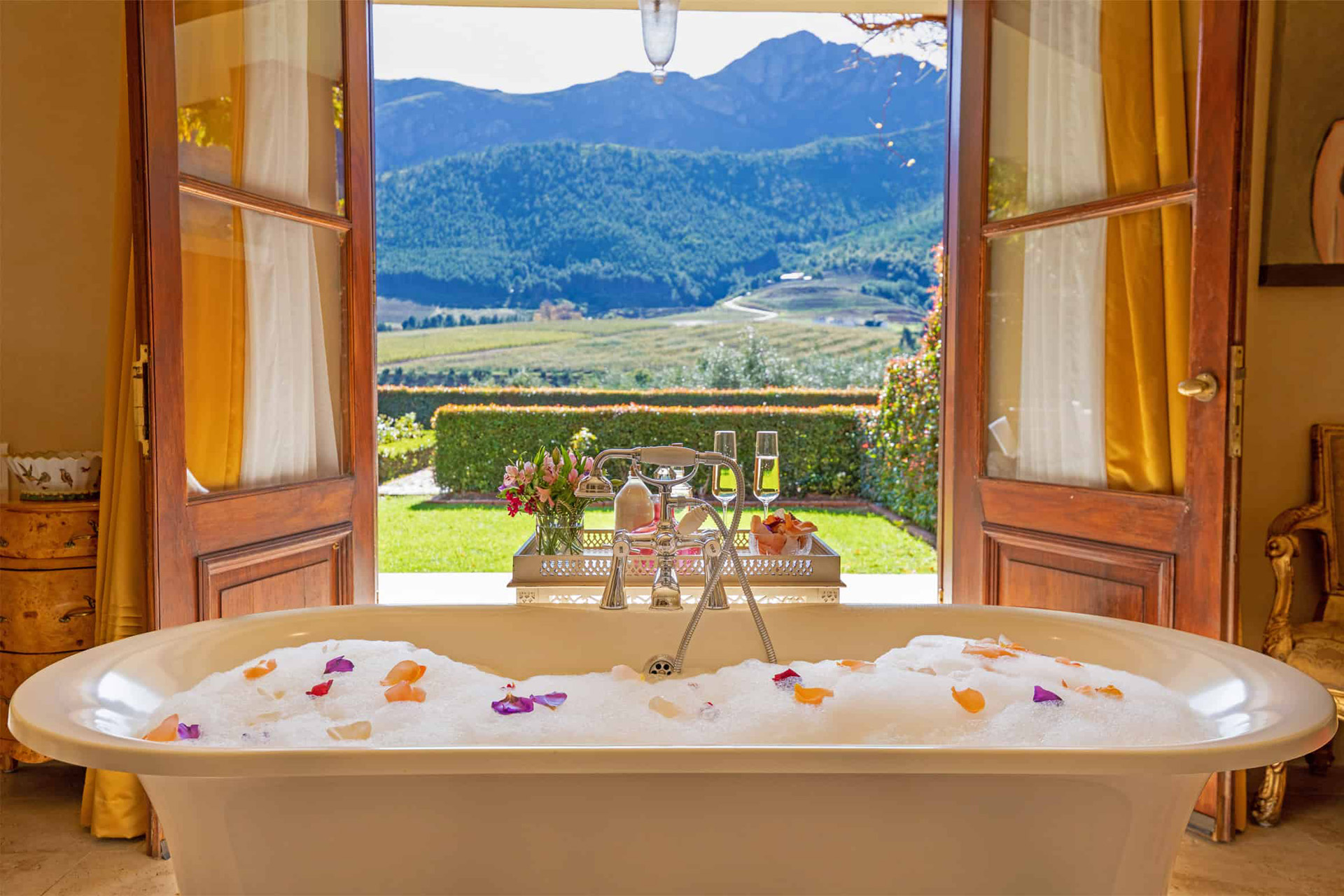
Luxury Suite
La Residence
Surely one of everyone’s favourite hotels in the world is La Residence (dubbed ‘La Res’ by locals), which is approached up a drive alongside fields of miniature horses, springboks and peacocks. A regular haunt of Elton John — who planted flaming purple jacaranda trees there and slumbers in the Maharani Suite — it’s on a 30-acre estate bursting with kumquat, blood orange and pomegranate trees. The hotel offers warm, personalised service — kicking off with a handful of its megawatt-smiling staff assembling to greet you, waving, outside the door and handing you your favourite drink (discovered through their clever sleuthing). They like you to feel that you’re one of the family.
There are 11 individually decorated suites, plus five family (and superstar) friendly private villas. All feature bathrooms big enough to land a helicopter in (or there’s also a helipad outside), and balconies or patios or gardens overlooking the surrounding mountains: the foothills of the Franschhoek Valley, with views of olive groves, plum orchards (it was a plum farm), plus their own vineyards producing 10,000 bottles of Cabernet Sauvignon, Shiraz and Rosé.
The rooms are bursting with a bold mix of objets d’art, antiques and groaning chandeliers. The vibe is delightfully camp-meets-theatre-set with its delicious riot of colour and eclectic objects conjured up by local hero and decorator, Liz Biden. (The gilded mirrors, art and painted furniture will have your inner maximalist squawking gleefully.)
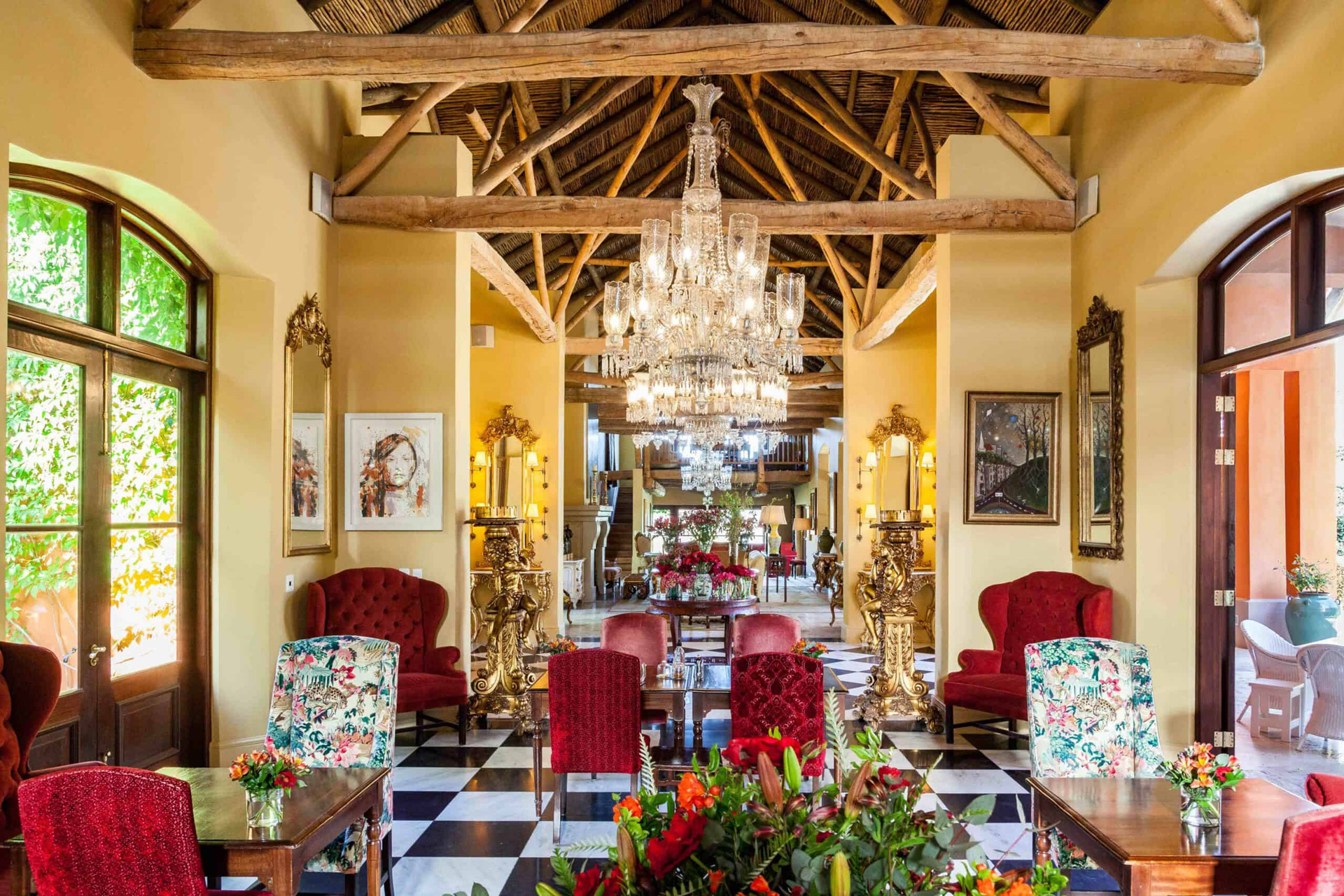
Dining in The Great Hall
It’s a brilliant base from which to explore the local wineries and restaurants. But it’s likely you may not wish to leave its poolside or glorious baronial-style dining room with 500-lb crystal chandelier. Or indeed your suite, overlooking white roses and hills planted with vines. It’s the sort of place you may want to stay in for the rest of your life.
BOOK IT: From R7,500 (approx. £355) per night per person, including breakfast, full mini bar and Franschhoek shuttle. theroyalportfolio.com
Otter’s Bend Lodge
For the eco place to send the kids to volunteer on their gap year — or your budget option as the recession bites — it’s hard to beat Otter’s Bend Lodge. It’s a farm with self-catering riverside cottages — ‘a boutique traveller’s farmstay’, in the words of the delightful owners, Mark and his wife Mary. Think log cabins with braais (BBQ pits) beside the Franschhoek River. Or bag the ensuite room in the orchard — it has a soaring thatched roof, wooden rafters and splendiferous view over the mountains, low clouds and fields. The water’s from a bore hole and the electricity supply is intermittent — but candles are just so romantic. And everything is recycled and upcycled —putting the ‘oh’ into eco.
You’ll probably meet Ben the friendly Doberman or a horse or two, and might be woken at dawn by an old-fashioned alarm clock: a cockerel crowing. The owners may even offer you some of their hens’ fresh eggs. Somewhat eccentrically, Mark has also parked a red, vintage double-decker bus in the grounds, beside the organic veg garden — bursting with spinach, chard and spring onions — where produce is grown primarily for underprivileged kids from the local school to tend and pick.
Ask to see Mark’s carpentry workshop — where locals come on bursaries and well-heeled Europeans send their offspring to learn woodwork skills; chat to Mark about their Cape Winelands Biosphere Reserve conservation work, supporting the area’s Biodiversity; get involved in education projects for local children; or volunteer for their charity, Flourish, for abused — and often pregnant — young adolescent girls and women. In fact, the couple run 14 non-profit, conservation and education projects, don’t charge kids for placements, and always take their interns on a free road trip to ensure that they see the Big Five and the Garden Route. If the beautiful surrounding countryside is more your style, they’ll loan you a mountain bike, or you should hike by the dam in the nearby nature reserve. Walks don’t get much prettier than this. And then you can plunge into the chilly water for a refreshing dip.
BOOK IT: Cottages from £35 per night. ottersbendlodge.co.za
Things To Do In Franschhoek
The town’s teeny and idiosyncratic first South African Perfume Museum (did you know that 1st century-Romans put scent on their pets?) and its Huguenot Memorial Museum (think 18th century paper cutting art to 17th century footwarmers) should be on your tick list.
Head to Main Street and you’ll find beautifully curated homeware and local artisans’ work at Ebony, and some enticing contemporary and modern sculptures and paintings at Everard Read, Africa’s oldest commercial gallery. If it’s stones that are your thing, there are pretty precious, semi-precious ones and fossils and crystals at Forever Gems, and Bold Stone Creations is a fabulous stonemason’s if you want to ship back a rough-hewn rose quartz basin. For woven baskets, kikois and beaded leather dog collars, it’s The Lamu Collection.
After you’re done with all that and samplings at the Belgian chocolatier, go out of town to The Franschhoek Motor Museum – it covers cars, bikes and motorcycles and looks back at 100 years of motoring history. Eighty of the 300 vehicles are on show, from an 1898 Beeston motor tricycle to a 2003 Ferrari Enzo supercar. Then hop aboard Franschhoek Wine Tram: this open-sided vehicle — modelled on a late 19th century one — will transport you through rolling vineyards at which you’ll jump off for wine tastings, cellar tours and lunch. Go on a heli voyage from La Residence of up to 40 local wine estates starting with Stony Brook, La Motte, Athoninij Rupert and Boschendal, gradually becoming less steady on your feet as the day progresses.
Or nip out for a sundowner and biltong at Sir Richard Branson’s Mont Rochelle Hotel set in 96 acres high above the village. There are baboons in the nearby hills, which are worth a trek too. And don’t miss an early-morning hike in the foothills with king protea and views over the valley.
Where To Eat In Franschhoek
From fine dining to harvest tables, it’s all here. The wine tastings and meals will satisfy even the most pernickety gourmands and oenophiles. (For teetotallers, there’s plenty to do without tastings or even getting within sniffing distance of the wine pairings with a grande bouffe.) La Residence boasts a Chef’s Table overseen by chef Brandon with passion and offering six courses, from grilled prawns with summer melon salsa and mussel crème. (And who wouldn’t fall for a drink with fresh pansies decorating the glass?). But leave room for a brekkie that includes pickled baby fennel, marinated artichokes and vegan cheese balls.
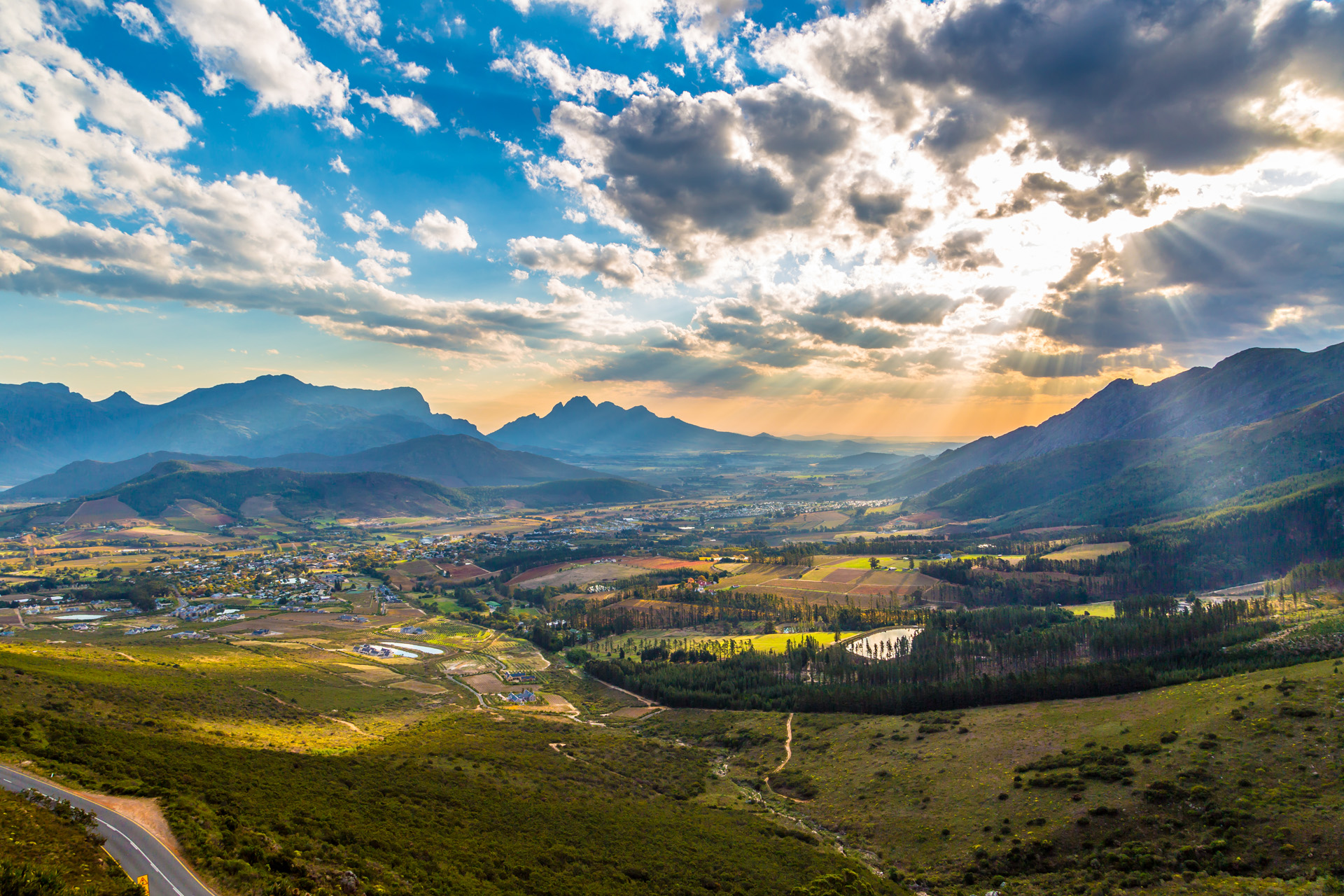
Franschhoek
La Petite Ferme offers spectacular views over its garden of geraniums and roses onto the vines – you’ll eat Insta-worthy smoked trout, then line fish on the veranda with the widows open and the breeze in your face. La Petite Colombe is for theatrical dining, using local ingredients and French flair in a refined space. Orangerie at Le Lude pulls the Cape Town crowd. Unpretentious — using ingredients from forests, meadows, mountains and sea of the Cape — you’ll get a tip-top soufflé.
Chef’s Warehouse has jaw-dropping views and is consistently good. Head there for award-winning tapas, the Maison Estate’s wines and blonde wood and grey surroundings. Nip to Protegé if you love something a bit flouncy — think fine dining and sharing plates in an airy space of neutral wood and leather. Hot foot it to La Residence’s Terrace Restaurant for casual dining and flavoursome curries with a South African slant by chef Grenville, who will enthusiastically show you his homemade yeast, fruit vinegars and sourdough mother.
Stellenbosch
It’s just a short trip over the Helgshoogte Pass from Franschhoek to Stellenbosch — South Africa’s second oldest town, and the tourist capital of the Winelands.
STAY
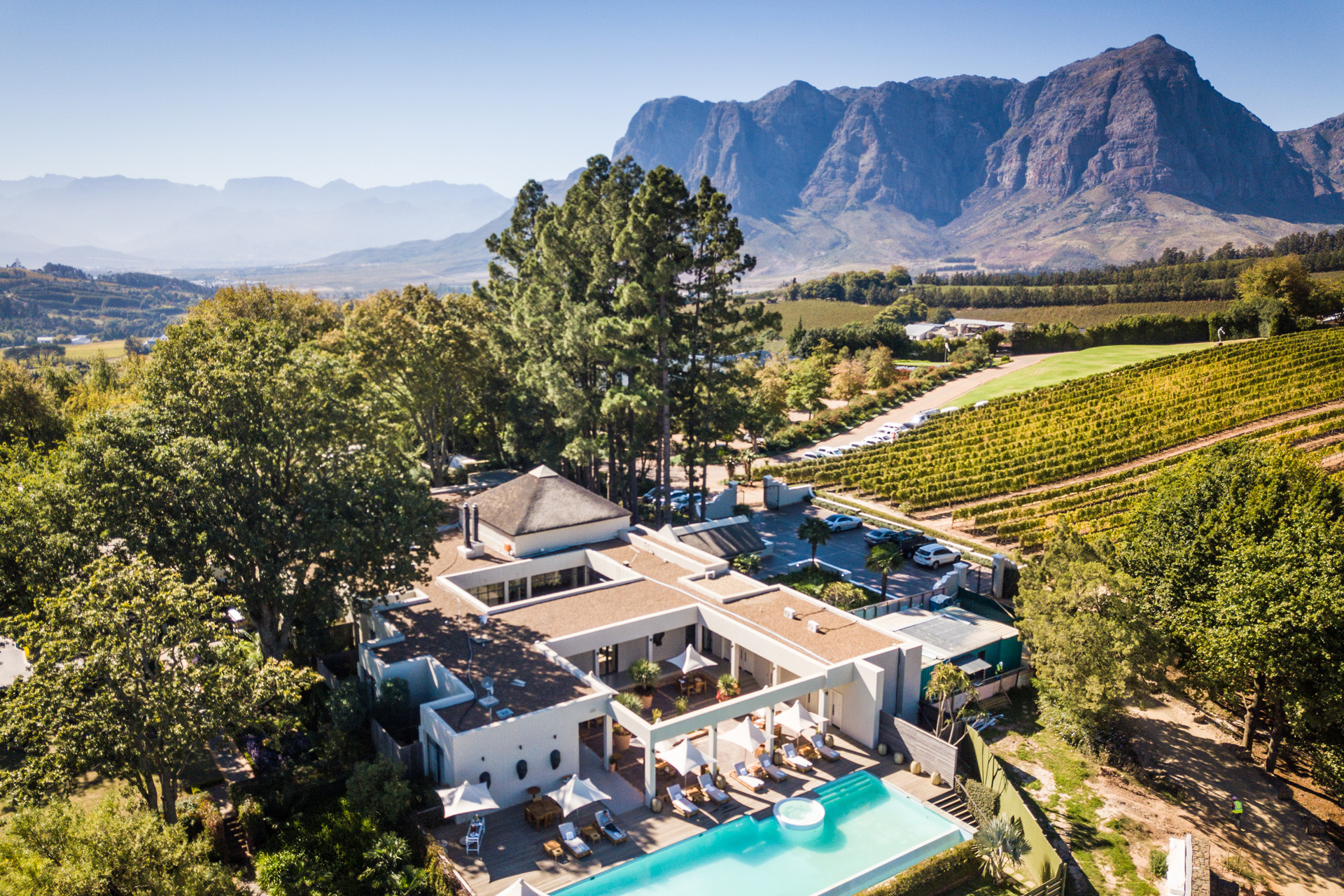
The Spa at Delaire Graff Estate
Delaire Graaf Estate
Owned by billionaire gem and diamond dealer Laurence Graff, this is one of the diamonds of the Cape Winelands. There are 16 lodges and an Owner’s Villa built on a rise, the Helshoogte Pass, with panoramic views of the stunning Simonsberg and Drakenstein mountains. Plus it offers eye-poppingly beautiful communal spaces and an incredible art collection. There are David Collins Studio designed interiors — textures and decorating materials that are the stuff of designers’ dreams sit alongside interior streams, rippling water features and internal ponds — and a sophisticated winery building.
Everything is very luxy: from superior, luxury and deluxe lodges to the two-bed, 1400 sq ft presidential lodge with private pool. But the 10 carat diamond is Laurence Graff’s private house, the four-bed Owner’s Villa, which is very POA, and utterly beautiful. At 6500 sq feet, there’s a big infinity pool and picture windows with views of the Botmaskop Peak and Table Mountain. Plus it comes with a private chef, butler and oooh-ah art collection of works by Yves Dana, Jabu Nala and Cyrus Kabiru alongside contemporary African and international artists.
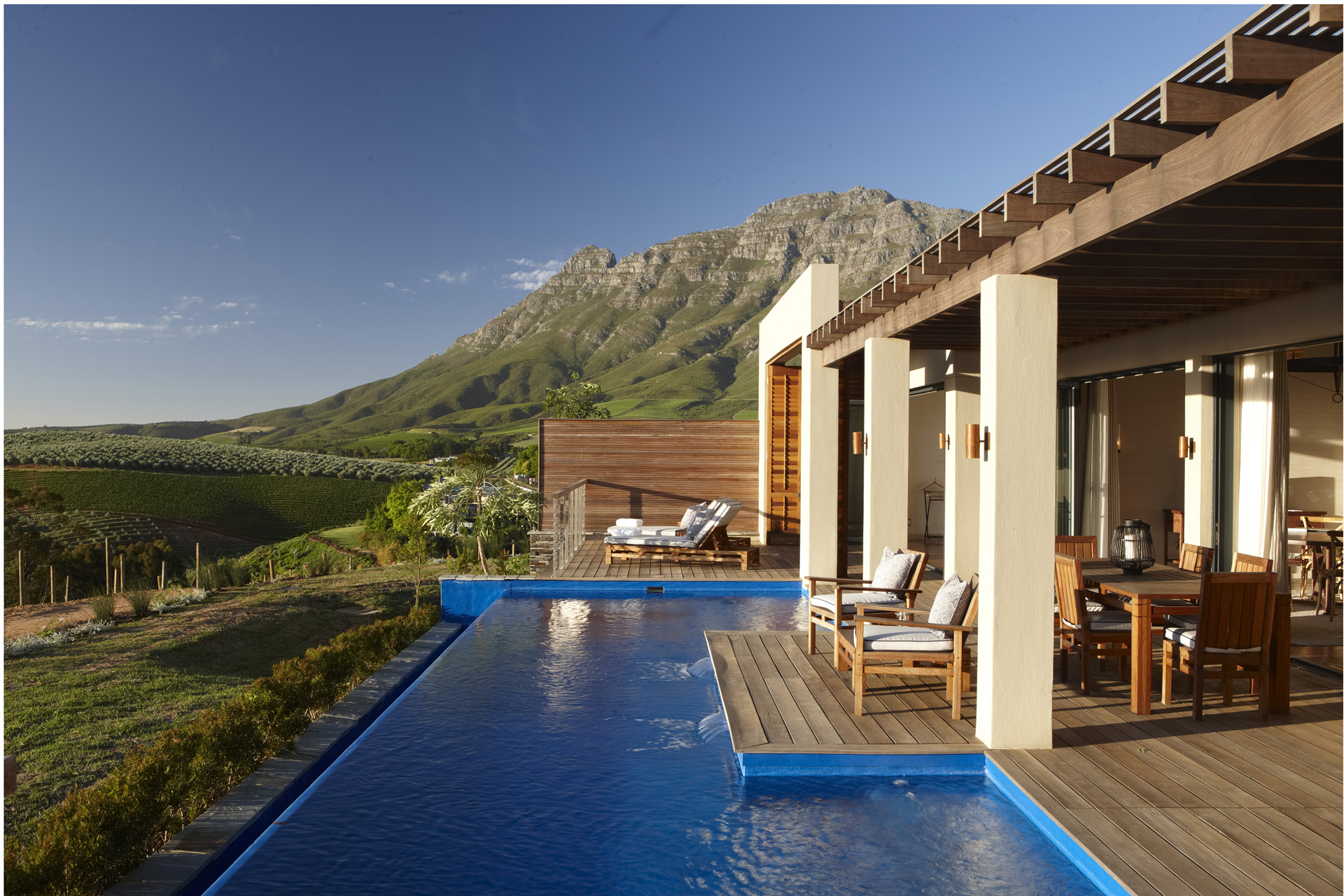
Presidential Lodge
The gardens are a botanical Eden with over 350 indigenous plants. The 54 acre-estate is planted with Chardonnay grapes and Bordeaux and is particularly known for its full-bodied reds, testimony to its mountain and maritime influences and unique terroir. Wine, art, natural beauty, diamonds: you get the lot here.
BOOK IT: Lodges from 19,500 SAR (approx. £929) per night, including breakfast, based on two sharing a Garden Lodge off-peak. delaire.co.za
Things To Do In Stellenbosch
Visit Dylan Lewis Sculpture Garden — by appointment only and it’s so off the beaten track you’ll need Google maps or a local to get you there. It’s in a beautiful setting between mountains with leopards and the suburbs of Stellenbosch. The garden — which represents the Jungian ‘wilderness within’ — has over 60 of Lewis’s sculptures and other South African artists, including Deborah Bell.
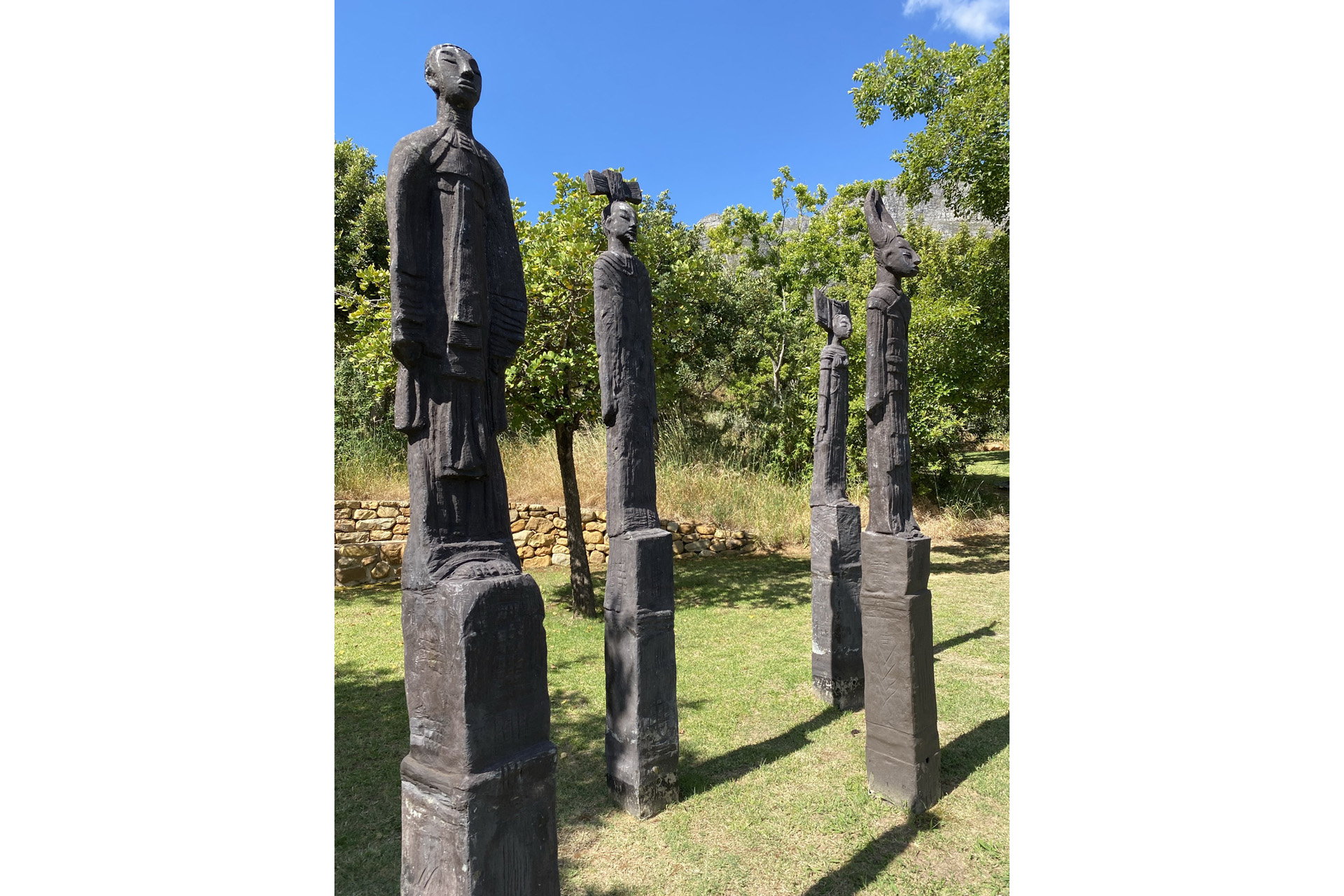
Dylan Lewis Sculpture Garden
An Art Tour at Delaire Graff is also a must. There are 400 pieces of art and sculpture on the estate, a showcase of South Africa’s best contemporary artists, all with the incredible backdrop of the property and its tranquil gardens and estate — from Vladimir Tretchikoff’s iconic painting Chinese Girl to Anton Smit’s sculptures. A Wine Tasting in Delaire Graff’s art-filled Wine Lounge or terrace overlooking the Simonsberg mountains is another draw – or you can go for a mocktail. You’ll need 45 minutes or even 90, depending on how quickly you drink your wine. Go for the Icon Tasting, their top-tier collection, starting with an MCC and ending with the reserve Cabernet Sauvignon. A visit to the Graff Boutique, the only Graff store in South Africa, will leave you lusting after yellow, pink and blue diamonds and wanting a necklace of heart-shaped icy stones or a 5.97 carat ring fashioned from an emerald-cut diamond and round diamond cluster.
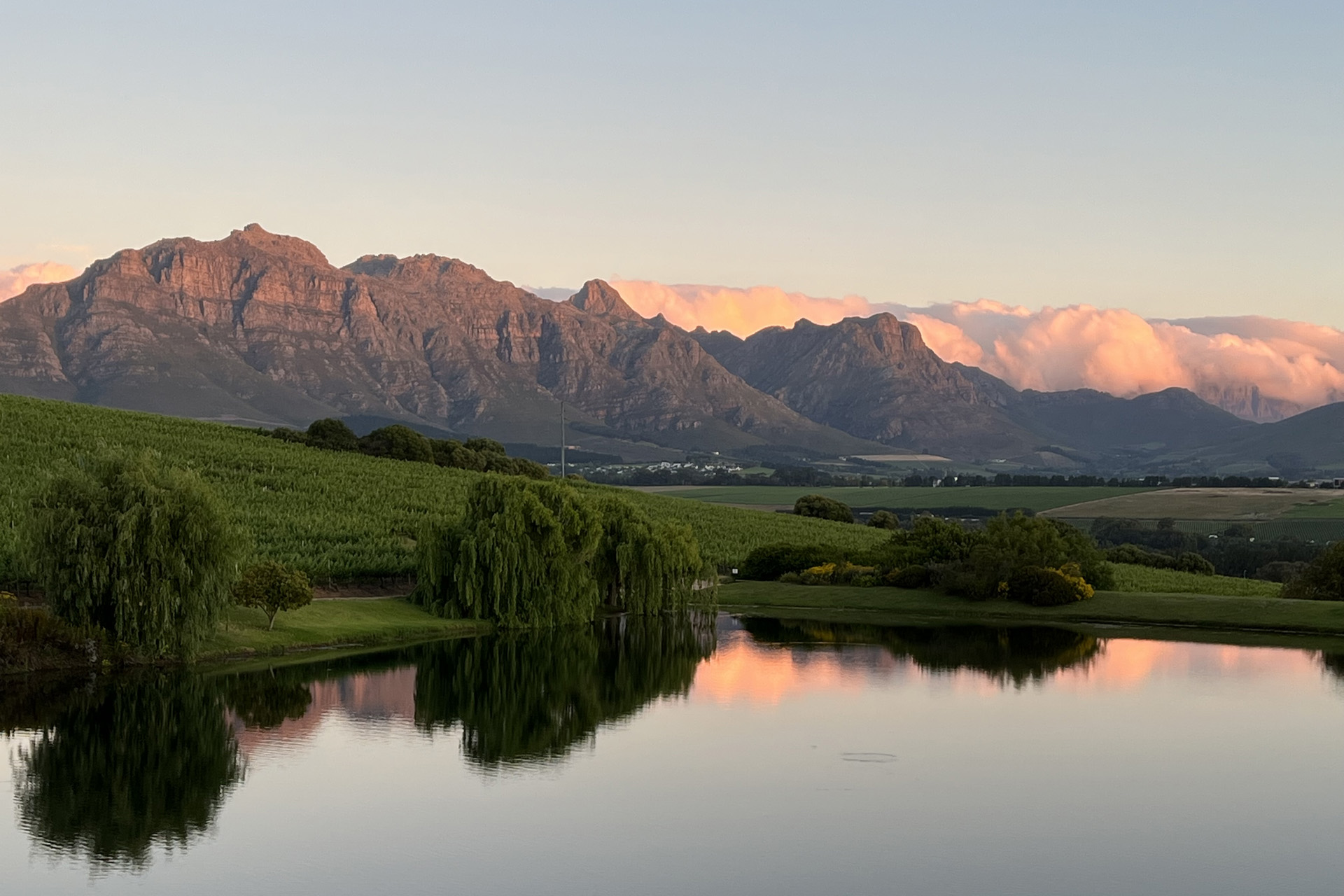
Stellenbosch
Stellensbosch is a winner with its wealth of impressive Dutch Cape architecture, university town vibe (it’s South Africa’s premier Afrikaans university) and shady oaks, which are welcome when it’s blisteringly hot. The town may boast stately avenues, but it’s anything but staid with all that buzzy student life. Go to Lanzerac Wine Estate – once known as Schoongezicht or ‘Beautiful view’ and the closest to Stellenbosch – for vines first planted in 1692. After all your sightseeing, you’ll probably want to chill in the Lanzerac Spa (day visitors welcome) with its sea of milky coffee marble, lap pool that’s as hot as a bath, and cold mist room — not to mention a welcome drink of sparkling wine as you look through picture windows onto the vineyards. Don’t miss a Pinotage massage (using oils from the local pinotage grapes) with Sia with her waist-long braids and superb hands. It’s excellent, from the heated eye-pads to rose essential oil scented couch.
Where To Eat In Stellenbosch
Dusk is a must, must, must try. The brainchild of chefs Darren Badenhorst and Callan Austin (of multi award-winning Le Coin Français fame), it’s an experiential treat where fine dining, exceptional presentation and your emotions collide happily, and you dine at dusk. Think delicate, innovative food and lots of ferments.
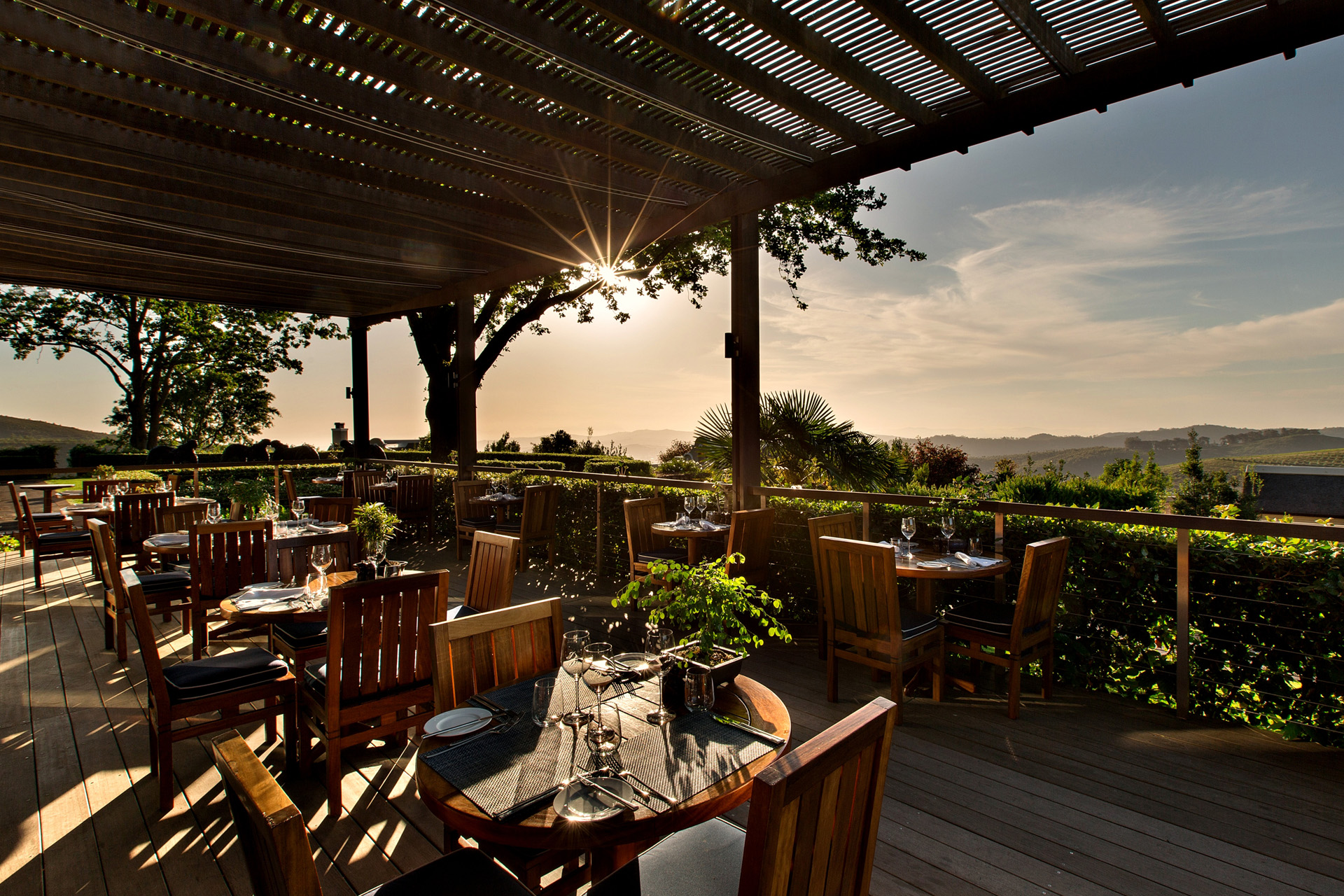
Indochine outside terrace
Indochine, the Delaire Graff Estate’s Asian themed restaurant is one for jaw-dropping views over the Winelands, dishes presented as prettily as flowers and elegant service that arrives more quickly than you can blink. It’s just garnered South Africa’s tip-top 3-Plate award. At breakfast, there’s the best ‘blackened avocado’: warm avo served with edible pansies and speckled with charcoal, eaten alongside cold-press juices. And there’s the Delaire Graaf Restaurant, too, for contemporary bistro-chic dishes on the oak-shaded terrace with views of vineyards. (Don’t miss the truffle chips. And what about some white chocolate cheesecake with paw paw, lemongrass and coconut?).
You can’t go wrong at Taphuis at Lanzerac with skaapstertjies (lambs’ tails) with black garlic mayonnaise and crispy chicken bites encased in macadamia nut crumble — delicious Afrikaans food on the shady terrace (or inside beside the roaring fire).
Babylonstoren
When the Dutch East India company set up in the Cape to provide fresh water, fruit and veg to the sailing ships of the spice trade, they couldn’t have imagined that Babylonstoren would ever have resulted. (The garden is inspired by the Company’s one in Cape Town along with the mythical gardens of Babylon.) The estate —which was founded in 1692 and is one of the best-preserved Cape Dutch werfs — is set in over 500 farm acres (that you can visit) chock-full of oranges, olives, vineyards and plums, and also boasts a 12-acre formal garden. It is a mere 45-minute drive from Cape Town, yet you’re in oenophiliac heaven and with the Simonsberg, Du Toitskloof and Franschhoek mountains as a celestial backdrop.

A birdseye view of Babylonstoren
STAY
Urban-style meets rustic neo-authenticity in the Garden of Eden’s little sister is what this place is all about (a sort of Western Cape version of Daylesford Organic). You can stay in the estate’s exclusive-use, five-bed Cape Dutch homestead: a cool makeover of an 18th century manor house. Or go for cottage candy and book one of the six pretty Fynbos Cottages — think open-plan, Cape Dutch-style architecture with interiors that are all gleamingly white, an Elle Deco vibe (as might be expected from owner, former mag editor Karen Roos), plus a well-stocked kitchen in a sleek glass cube extension.
They’ve just opened a family house, too, with room for 10 guests, plus a private courtyard. Or take a worker’s cottage — with its stable door, comfiest of beds with crisp linen sheets and feather pillows and white-on-white interior. Although it’s still pretty dark inside, you’ll feel like the luckiest of labourers – particularly when you drink the fresh strawberry juice from your fridge or have a tussie-mussie (a bunch of just-plucked garden herbs that you drop into your bath, then breathe in the aroma).
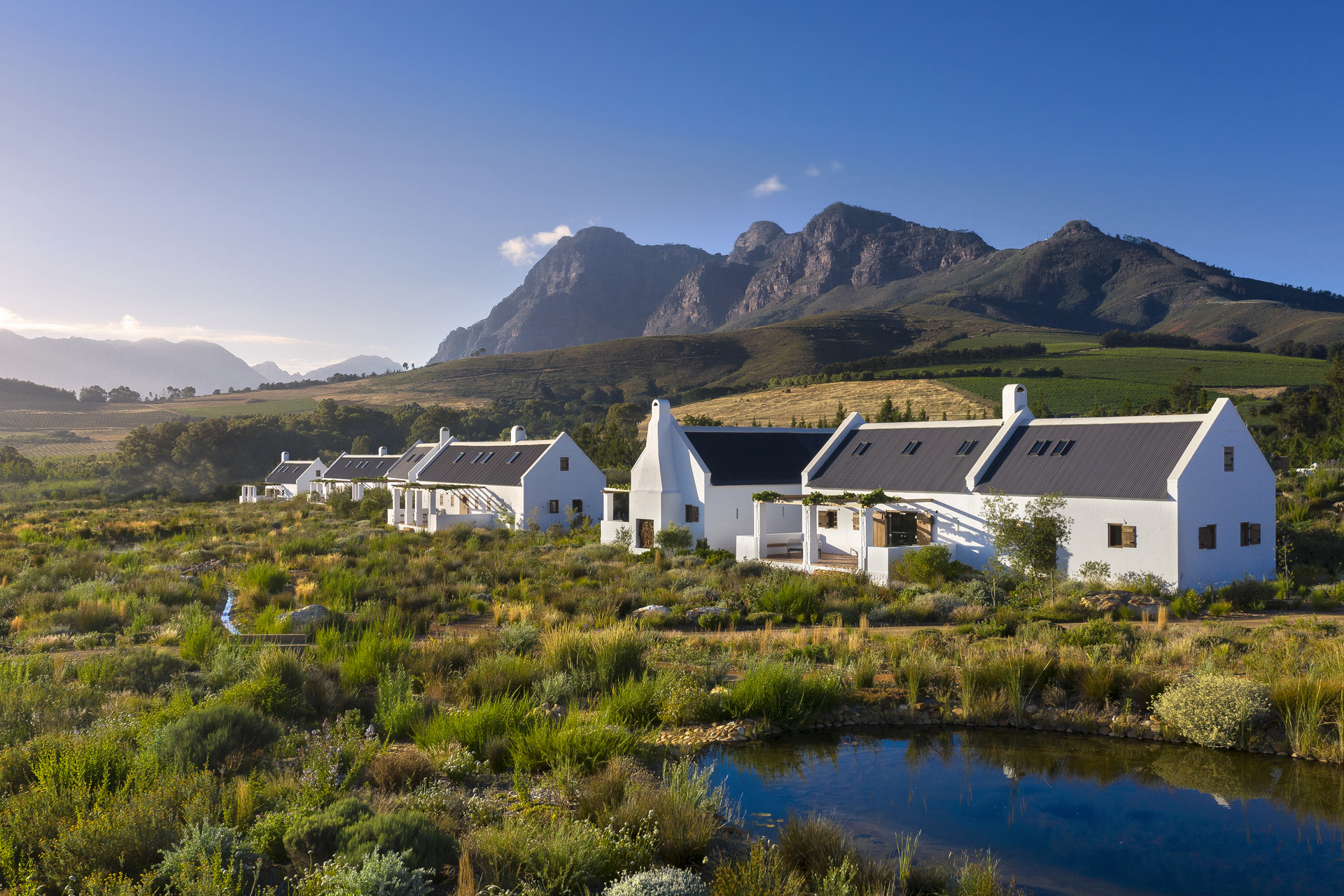
Fynbos Cottages at Babylonstoren
In winter, you’ll likely just wish to sit by a hearty roaring wood burner with a glass of the estate’s rich, full-bodied Babel red vino. And, in summer, who wouldn’t want to bronze outside while watching the sun set over vineyards, lakes and mountains? And you’ll definitely leave weighed down with the generous complimentary gifts of wine, olive oil, and balsamic vinegar that they offer in the bedrooms. All worth paying excess luggage for.
BOOK IT: Rooms from R12,600 (approx. £706) per night, based on two guests sharing a farmhouse suite in the high season (1 September–30 April). babylonstoren.com
Things To Do At Babylonstoren
The hot spa opened in the Garden Spa in August 2022, and lifts the spirits with its soaring buildings, expanses of glass and sea blue, not to mention the bamboo-clad reception room. Choose from a 200ft lap of the inside-outside pool — cleansed with a salt water chlorinator — and two vitality pools with picture windows onto the vineyards. Plus there’s a sauna, hammam, Rasul chamber (for Arabian mud treatments), tropical rain showers, and Himalayan salt room. The vibe is reflective and meditative, with no children.
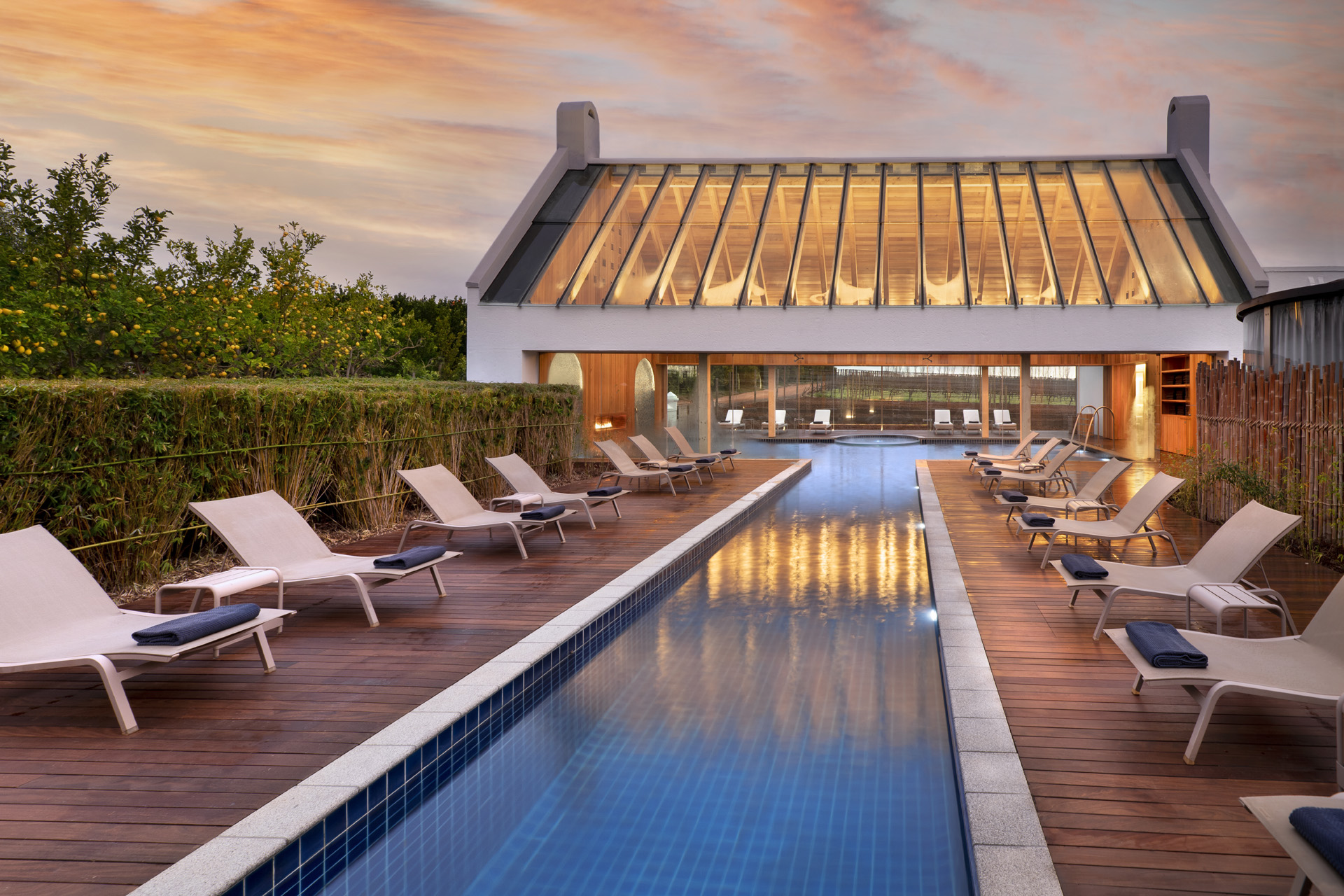
The Spa at Babylonstoren
Take a Farm Tour or Garden Tour. Or both. You’re on one of the oldest Cape Dutch farms, and on a Garden Tour you’ll see beehives, a prickly pear maze, myrtle-hedged paths and the glorious Puff Adder Walk. Not to mention a rare cycad garden. You’ll wander on paths of peach pip ‘gravel’ to the charming potting shed with its hand-made terracotta pots. See the Pecan duck army (a white regiment of ducks working as pest control). And explore the Spice Garden with its banana trees and turmeric, plus tropical fish living it up in a centrally-heated pond.
On the Farm Tour, Morné, in a straw hat, will guide you past folk picking plums the size of nectarines — you can also join the team to harvest, prune or plant — and show you nearly 300 varieties of veg, herbs, fruit and edible nasturtium and calendula flowers which end up, freshly plucked, in the kitchens. (Think dragon fruit, custard apples to prickly pears.) You’ll see a vineyard that produces eight wines (from shiraz to pinot noir), enjoy the wetlands area with its rice paddy, and pick your favourite scarecrow in the new (post-lockdown and ginormous) kitchen garden. You may wish to cycle on a mountain bike past tangerines groves under a tangy blue sky. Or self-drive a golf buggy.
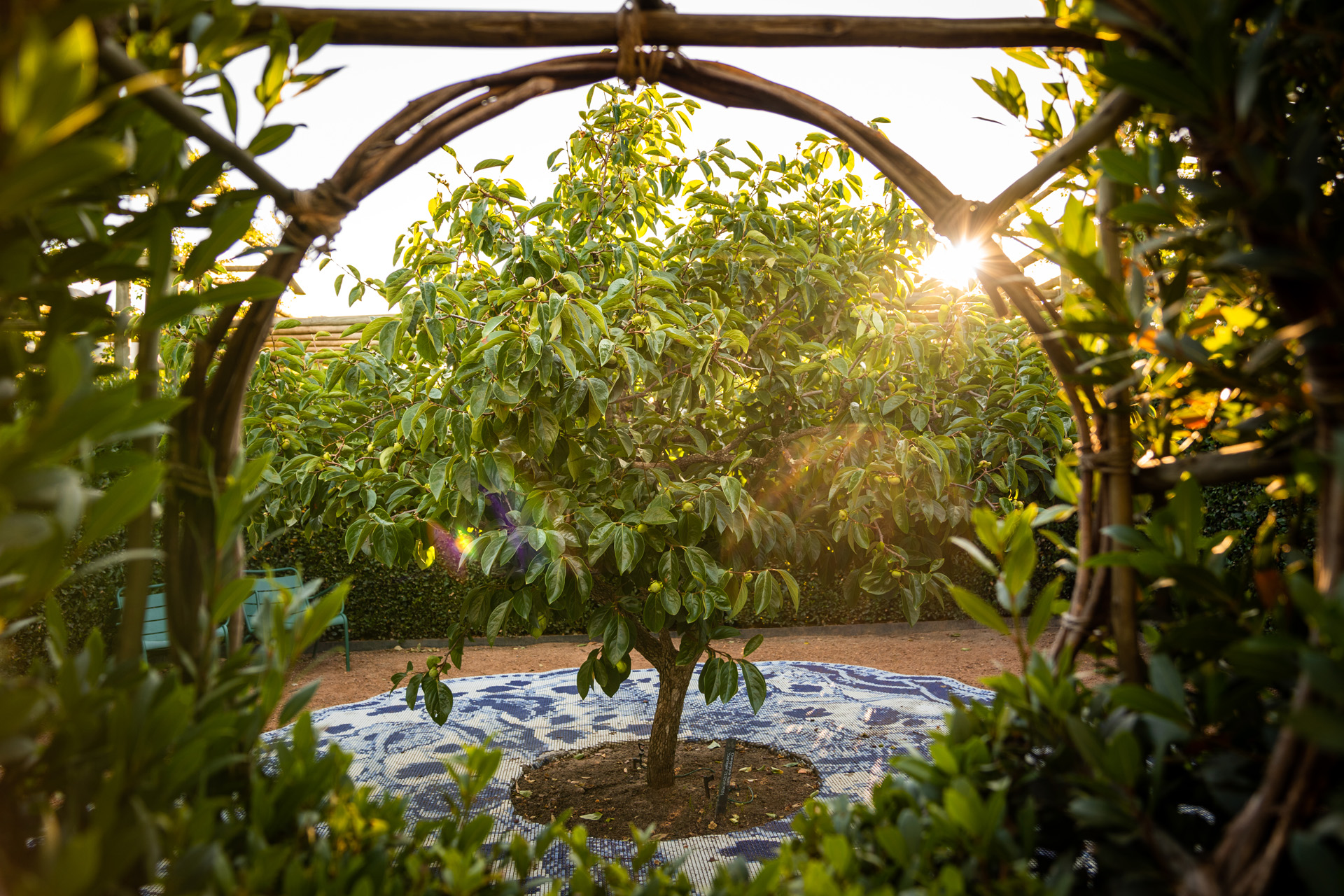
A peek at the persimmon trees on Babylonstoren Farm
Afterwards, bag Lee-Roy for an olive oil and balsamic vinegar tour to learn about acidity, glazing and tasting. And visit the Tasting Room and Wine Cellar for more than just sips of wine. You’ll see the olive-oil production plant, the wine production cellar and the new, airport hangar sized underground barrel maturation cellar, with 1500 oak barrels and steel tanks. After talk of fermentation and sediment, you’ll taste ten wines.
The Story of Wine is a museum that covers wine through the ages and is a playful, interactive type of place where you’ll find yourself sniffing wine aromas and muttering, ‘Strawberries?’. Then amble past lavender to The Barn for olfactory bliss and to blend your own face mask, bath salts or body scrubs. You may find yourself grating lemon zest, then adding Roobois tea and mustard powder (for sore muscles) into your homemade magnesium bath salts, and mixing it with the estate’s lavender essence. For retail therapy, the Cheese Room, Meat Room, Bakery and Lekker Room are all worth a visit. You’ll also want to go home laden with vacuum-sealed, farm-made biltong and rusks from the shop.
Eat At Babylonstoren
Babylonstoren is a foodie nirvana, and you probably won’t want to leave the farm. Go to Babel in an erstwhile cow shed, where historic architecture meets contemporary glass walls for a truly unbeatable breakfast buffet that includes buffalo yoghurt, sweet or savoury home-made granola, and the best seeded bread.
In the evening you’ll sit here — or in its plane tree filled courtyard — for yet more seasonal, farm-to-fork fare. Don’t miss the excellent, cow-size, aged steaks and salted chocolate mousse. And if you’re celebrating, they’ll give you a bunch of protea flowers after your meal. The pretty Greenhouse has queues for lunch, it’s so popular — and rightly so. You may want chilled strawberry gazpacho (bursting with tomatoes, too), or a harvest salad with fresh garden leaves. And the juices are worth crossing Africa for. The Spice House can be booked for private group meals amid plants such as ginger and galangal and under hanging orchids: the ultimate in rustic chic.
How To Get To South Africa’s Winelands
Virgin Atlantic flies direct between London Heathrow and Cape Town with return fares from £815 per person, including complimentary food, drink, inflight entertainment and taxes. virginatlantic.com
Featured image: A birdseye view of Babylonstoren.


